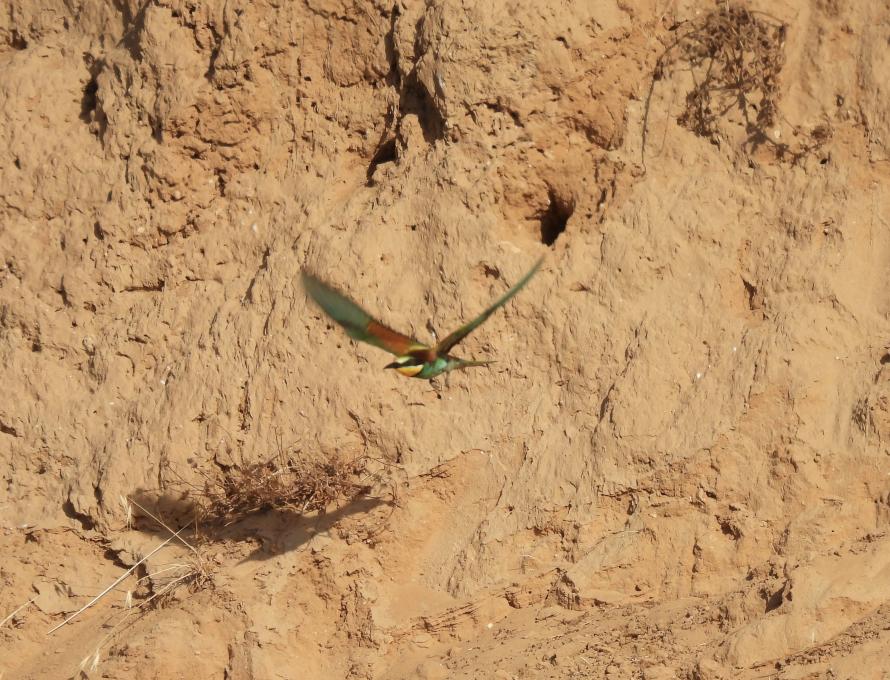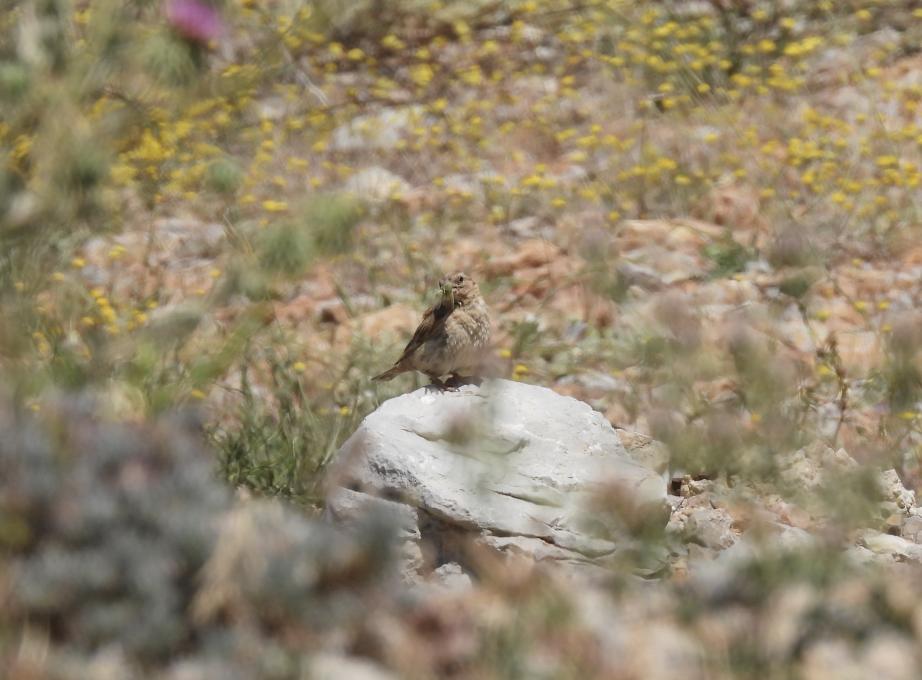Phyllis
Forum Replies Created
Viewing 2 posts - 1 through 2 (of 2 total)
-
PhyllisParticipantI live in the desert so there isn't much in the way of sit spots or car-blind birding. I went to different locations for each photo. For the common bee eater (bottom) I placed the nest hole in the upper right-hand 1/3 of the photo and photographed the bird as it exited. There is a lot of space in front of the bird, to move into. The white spectacled bulbul (middle) was in my bird-bath and I broke the rules by putting it dead center, but I wanted to show motion. I aimed low (belly-water interface) and got that in focus (F 5.7) and took a medium slow shutter speed of 1/125 of a second. Finally I broke the rules with the pale rock finch but was so happy that I got water drops on its face/throat. I probably should have moved it to the left 1/3 of the photo and had more of the water in front of it, to the right.


 in reply to: Practice Crafting Great Bird Photos #721361
in reply to: Practice Crafting Great Bird Photos #721361 -
PhyllisParticipant

 I chose to look for the Rock Sparrow, Petronia petronia (a life-list bird for me). This is a bird that is found in rocky habitats throughout the Mediterranean, but has a north-south movement throughout the year in Israel. Since we were in lockdown when it was in my area in the Negev desert in the spring, I went to Mt Hermon (3000 m) where it is easily found in June and July.
I used three resources: eBird, Oiseaux birds and Wikipedia. As to the description, eBird records it as “odd-looking, chunky, sparrow-like bird”, whereas Oiseaux is “very similar to the female House Sparrow”. In my unschooled opinion it just looks like a sparrow, not odd at all. Further to its appearance, a yellow spot on the throat is rarely visible in the field (eBird) which, indeed, is not visible in my photographs. However (Oiseaux) record that both females and males prefer mates with bright yellow spots. It does have a streaked breast, brown head and pale yellow eyebrows.
All sources were in agreement with it being found in arid, rocky habitats with short grass and Oiseaux has it as a “typical Mediterranean species”. It feeds on seeds and berries throughout the year and insects when feeding nestlings.
They are reported to nest in crevices in rocks or walls; so, it was very odd when I saw it at the mouth of a pipe. At first I thought it just landed there; this pipe was about 12 cm in diameter, stuck in the ground and at about a meter in height bent at a 45º angle. Since there is no sexual dimorphism I didn’t know if it was a male or female bring insects to the nestlings. It perched in the open and had an upright stance holding the insect in its mouth. I moved away to allow it to freely fly to its nest in the pipe. in reply to: Practice Understanding Birds for Better Photos #719859
I chose to look for the Rock Sparrow, Petronia petronia (a life-list bird for me). This is a bird that is found in rocky habitats throughout the Mediterranean, but has a north-south movement throughout the year in Israel. Since we were in lockdown when it was in my area in the Negev desert in the spring, I went to Mt Hermon (3000 m) where it is easily found in June and July.
I used three resources: eBird, Oiseaux birds and Wikipedia. As to the description, eBird records it as “odd-looking, chunky, sparrow-like bird”, whereas Oiseaux is “very similar to the female House Sparrow”. In my unschooled opinion it just looks like a sparrow, not odd at all. Further to its appearance, a yellow spot on the throat is rarely visible in the field (eBird) which, indeed, is not visible in my photographs. However (Oiseaux) record that both females and males prefer mates with bright yellow spots. It does have a streaked breast, brown head and pale yellow eyebrows.
All sources were in agreement with it being found in arid, rocky habitats with short grass and Oiseaux has it as a “typical Mediterranean species”. It feeds on seeds and berries throughout the year and insects when feeding nestlings.
They are reported to nest in crevices in rocks or walls; so, it was very odd when I saw it at the mouth of a pipe. At first I thought it just landed there; this pipe was about 12 cm in diameter, stuck in the ground and at about a meter in height bent at a 45º angle. Since there is no sexual dimorphism I didn’t know if it was a male or female bring insects to the nestlings. It perched in the open and had an upright stance holding the insect in its mouth. I moved away to allow it to freely fly to its nest in the pipe. in reply to: Practice Understanding Birds for Better Photos #719859
Viewing 2 posts - 1 through 2 (of 2 total)




 I chose to look for the Rock Sparrow, Petronia petronia (a life-list bird for me). This is a bird that is found in rocky habitats throughout the Mediterranean, but has a north-south movement throughout the year in Israel. Since we were in lockdown when it was in my area in the Negev desert in the spring, I went to Mt Hermon (3000 m) where it is easily found in June and July.
I used three resources: eBird, Oiseaux birds and Wikipedia. As to the description, eBird records it as “odd-looking, chunky, sparrow-like bird”, whereas Oiseaux is “very similar to the female House Sparrow”. In my unschooled opinion it just looks like a sparrow, not odd at all. Further to its appearance, a yellow spot on the throat is rarely visible in the field (eBird) which, indeed, is not visible in my photographs. However (Oiseaux) record that both females and males prefer mates with bright yellow spots. It does have a streaked breast, brown head and pale yellow eyebrows.
All sources were in agreement with it being found in arid, rocky habitats with short grass and Oiseaux has it as a “typical Mediterranean species”. It feeds on seeds and berries throughout the year and insects when feeding nestlings.
They are reported to nest in crevices in rocks or walls; so, it was very odd when I saw it at the mouth of a pipe. At first I thought it just landed there; this pipe was about 12 cm in diameter, stuck in the ground and at about a meter in height bent at a 45º angle. Since there is no sexual dimorphism I didn’t know if it was a male or female bring insects to the nestlings. It perched in the open and had an upright stance holding the insect in its mouth. I moved away to allow it to freely fly to its nest in the pipe.
I chose to look for the Rock Sparrow, Petronia petronia (a life-list bird for me). This is a bird that is found in rocky habitats throughout the Mediterranean, but has a north-south movement throughout the year in Israel. Since we were in lockdown when it was in my area in the Negev desert in the spring, I went to Mt Hermon (3000 m) where it is easily found in June and July.
I used three resources: eBird, Oiseaux birds and Wikipedia. As to the description, eBird records it as “odd-looking, chunky, sparrow-like bird”, whereas Oiseaux is “very similar to the female House Sparrow”. In my unschooled opinion it just looks like a sparrow, not odd at all. Further to its appearance, a yellow spot on the throat is rarely visible in the field (eBird) which, indeed, is not visible in my photographs. However (Oiseaux) record that both females and males prefer mates with bright yellow spots. It does have a streaked breast, brown head and pale yellow eyebrows.
All sources were in agreement with it being found in arid, rocky habitats with short grass and Oiseaux has it as a “typical Mediterranean species”. It feeds on seeds and berries throughout the year and insects when feeding nestlings.
They are reported to nest in crevices in rocks or walls; so, it was very odd when I saw it at the mouth of a pipe. At first I thought it just landed there; this pipe was about 12 cm in diameter, stuck in the ground and at about a meter in height bent at a 45º angle. Since there is no sexual dimorphism I didn’t know if it was a male or female bring insects to the nestlings. It perched in the open and had an upright stance holding the insect in its mouth. I moved away to allow it to freely fly to its nest in the pipe.